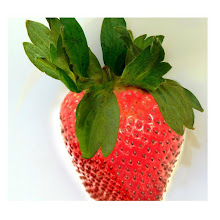Looking at the 1930s desk below, the burls create variation in tone across its smooth surfaces, and the wood veneer technique shows the care with which it was constructed. In these ways the piece is linked to the detailed/ornate furniture that historically preceded it. However, its sleek design shows a step toward what we now consider modernity. Style like this was the start of a streamlined aesthetic.

Art Deco desk, 1930s
Mid-Century modern furniture maintained this focus in clean geometric shapes, although materials were changed. Many contemporary office (or home office) furniture designs appear to be inspired, in turn, by Mid-Century modernism and space-age aesthetics.

Space Lounge, Jehs+Laub, 2006


Globus desk and chair, Michiel van der Kley, 2007

Oficio, Luiza Barroso and Quentin Vaulot, 2008

Around Clock, Anthony Dickens, 2000s
Some contemporary work-related products with clean lines are also imaginatively playful:

Baobab Desk, Philippe Starck, 2005

Pushpin Lamp


Formulas and Stockmarket ties, Josh Bach
The preference for modern visuals fits well in the context of cerebral work. It promotes a calm atmosphere of organization. There is a lack of clutter. This may help us direct our energy efficiently. Ergonomic environments are designed according to physical and psychological requirements with the aim being increased production. Sleek office products would encourage this, as they make our environment more structured and less distracting.
Computers/monitors, for instance, often have clean lines. While we may not consider computers strictly related to "work", some kind of mental activity and devotion of time is needed to operate a computer. What is conducive to this? For some, it is a simplified, but still attractive, look (e.g. Neovo E-Series LCD display). For others, it is more personalized, tactile, and other-wordly (e.g. custom steampunk laptop), proving there are always exceptions to the rule-- exceptions which may gain a lot of support through subculture popularity.

Neovo E-Series LCD display

custom steampunk laptop
How much is the average person taken into account in the manufacturing and sale of artistic products? Our tastes may be considered, but unfortunately prices often rise in accordance to the artistry of objects, making items less available to the general public. For example, the Globus desk previously shown is priced at $9,653. (In my first blog post, I mentioned the Hudson Furniture Atlantis chandelier, which was released this year for $30,000-- another unusually exorbitant price, but it would really light up a communal ice cave.)
We need art in typical objects like desks and lights; this shouldn't be limited to expensive pieces. Anyone should be able to access daily-life art, because, as humans, we appreciate it. Decoration has long occurred in work-related items (e.g. Chiricahua Apache quiver), suggesting our love of, and ability to produce, art in any object.

Chiricahua Apache quiver, 1890
photo credits: Dominique DeBruyne, Fritz Hansen, Artifort, Luiza Barroso and Quentin Vaulot, Anthony Dickens, Vitra, hotgadget.com, Josh Bach, Neovo, Datamancer, and intothewildwest.com.






































